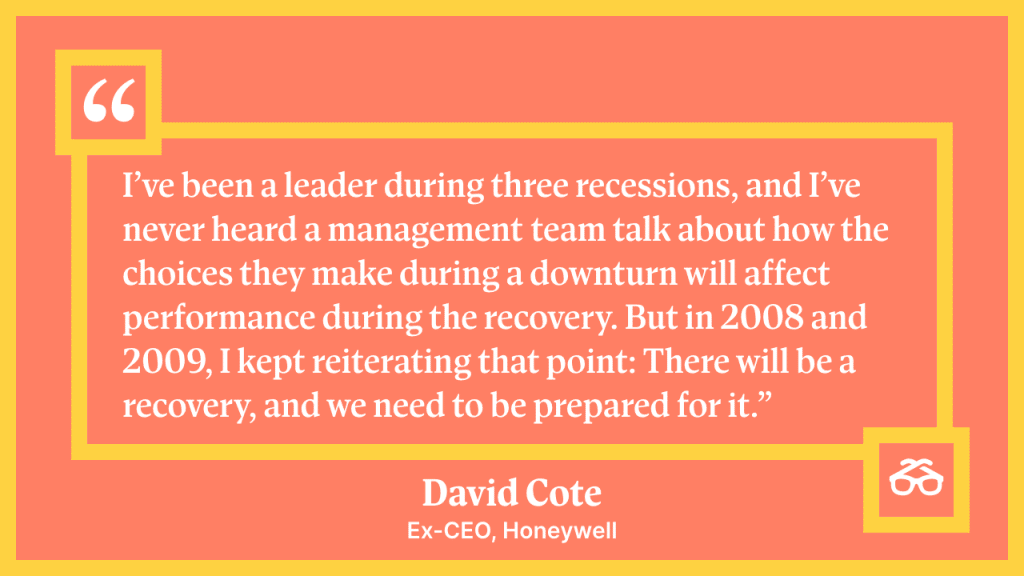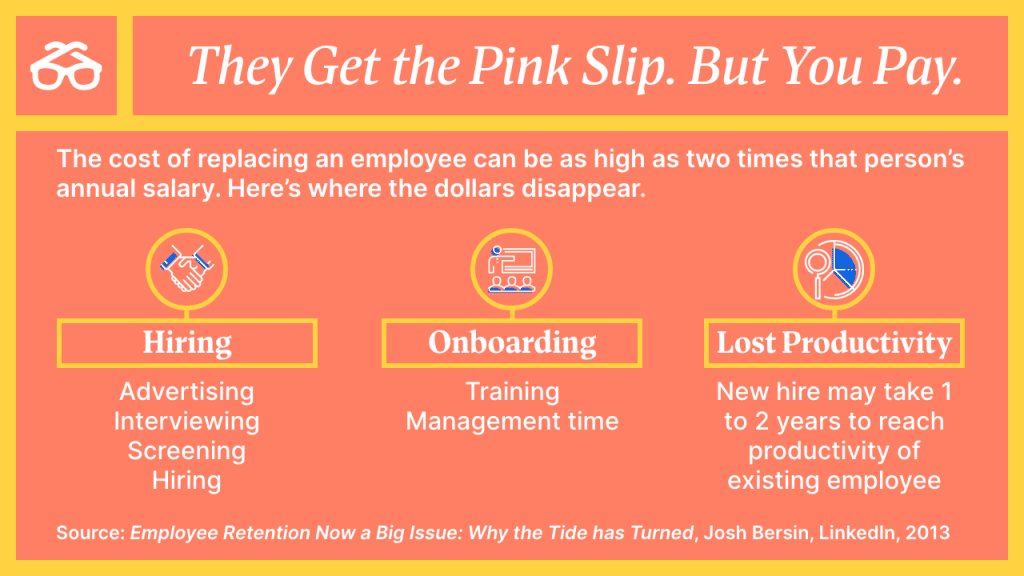I’d like to think we can agree on this: People are the most valuable asset of any business. People are responsible for the knowledge, skills, and innovation that create economic well being. This is the promise of human capital.
Yet 49% of companies in the United States that responded to a recent survey were considering layoffs. More than a third said they were in a hiring freeze.
Make no mistake, the health and financial hardships brought on by the ongoing COVID-19 global pandemic are devastating. We’re on unprecedented economic terrain.
Still, any business that can do so should make every effort to retain its workforce.
Keeping employees is more than a good-faith move. It’s a move that could pay off in a big way financially.
Layoffs Are Not the Answer
If your company’s short-, medium-, and long-term goals are to survive, recover, and grow, respectively, then diminishing your capacity to deliver because of a sudden, temporary demand shock may simply delay your downfall.
There’s a better response. It’s labour hoarding, and it might just turn out to be the master stroke of companies thinking seriously about getting back to their pre-crisis performance levels quickly. This includes a few, extra fortunate organisations that will slingshot right through the recession.
In every one of these success stories, workforce mobility — the ability for people to learn new skills and pivot to new responsibilities and roles within an organisation — will likely play a major role.

The Cost of Recruitment is High
The argument in favour of labour hoarding is this: Retaining workers, whenever and wherever possible, saves precious time, knowledge, and money essential for economic recovery. This is true at individual companies and across the global economy. David Cote, ex-CEO at Honeywell, made the argument for a more thoughtful approach to decision-making. “I’ve been a leader during three recessions, and I’ve never heard a management team talk about how the choices they make during a downturn will affect performance during the recovery. But in 2008 and 2009, I kept reiterating that point: There will be a recovery, and we need to be prepared for it.”
Staffing considerations are a huge part of that preparation.
Voluntary employee turnover costs a company roughly 33% of that employee’s annual salary, according to the Work Institute.
Indeed, studies show that the total cost of losing an employee can range from tens of thousands of dollars to one-and-a-half to two times that person’s annual salary, according to talent industry analyst Josh Bersin. He notes that the total cost includes: hiring a new person (advertising, interviewing, screening, hiring), onboarding a new person (training, management time), and lost productivity (a new person may take one to two years to reach the productivity of an existing person).
Let’s break this down further. We can estimate the cost of re-hiring 1,000 employees who make the average U.S. income of $48,672 per year is about $16 million (48,672 X 1,000 X 33%). This doesn’t factor in economies of scale, which would have an effect, of course. Still, when viewed somewhat hypothetically like this in a lump sum, there’s no denying the money could be better spent elsewhere.
Time-to-hire and, more importantly, time-to-productivity are major factors in workforce planning.
In most cases, the skills required for a project are only identified with the initiation of that project. And although it varies widely by industry, the average time-to-hire is 20 to 40 days, meaning many initiatives are playing catch up from day one. When timelines fall out of a hiring manager’s control — for example, when he or she is responding to a crisis — delivering results on time becomes nearly impossible.

Labour Hoarding Makes Sense
Instead of spending a third of a worker’s salary on hiring a replacement, retain that worker. If you can’t put that employee to work like you used to, provide four months paid upskilling time or reskill and deploy the employee to a different part of your business.
In other words, use downtime to gear up. Implement an upskilling strategy that will keep your business competitive and agile. When the recovery comes, thanks in part to your forward-thinking actions, your organisation will emerge with momentum. Your balance sheet will thank you.
The upside to labour hoarding is immense — if you’re willing to be bold and get a bit creative. Download our guide, 7 Steps for Upskilling Your Workforce, to learn more about upskilling and retaining your people.

